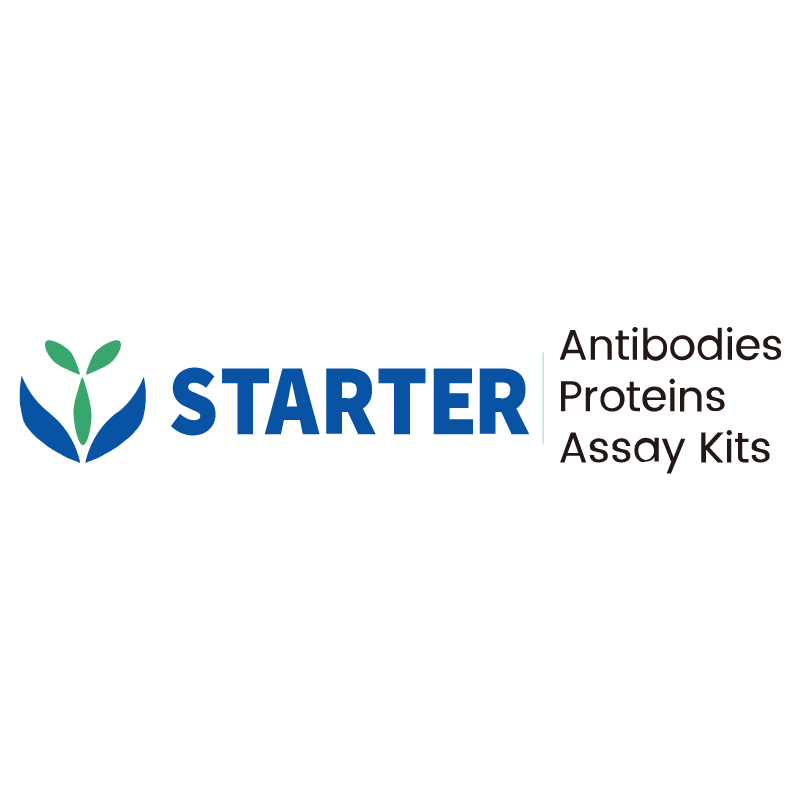IHC shows positive staining in paraffin-embedded human breast. Anti-Estrogen Receptor α antibody was used at 1/100 dilution, followed by a HRP Polymer for Mouse & Rabbit IgG (ready to use). Counterstained with hematoxylin. Heat mediated antigen retrieval with Tris/EDTA buffer pH9.0 was performed before commencing with IHC staining protocol.
Product Details
Product Details
Product Specification
| Host | Rabbit |
| Antigen | Estrogen Receptor α |
| Synonyms | Estrogen receptor, ER, ER-alpha, Estradiol receptor, Nuclear receptor subfamily 3 group A member 1 |
| Location | Nucleus |
| Accession | P03372 |
| Clone Number | SDT-10001 |
| Antibody Type | Recombinant mAb |
| Application | IHC-P |
| Reactivity | Hu |
| Purification | Protein A |
| Conjugation | Unconjugated |
| Physical Appearance | Liquid |
| Storage Buffer | PBS 59%, Sodium azide 0.01%, Glycerol 40%, BSA 0.05% |
| Stability & Storage |
12 months from date of receipt / reconstitution, -20 °C as supplied
|
Dilution
| application | dilution | species |
| IHC | 1:100-1:200 |
Background
Estrogen receptor (ER) belongs to the steroid receptor superfamily of nuclear receptors. It is a protein with 553 amino acids. The receptor molecule has three domains, i.e. the central DNA-binding domain, the hormone-binding domain at the Cterminal, and the transcription-activating domain at the N-terminal. ER mediates regulatory functions of female sex steroids, mainly 17 (E2), on growth, differentiation and function in several target tissues, including female and male reproductive tract, mammary gland, and skeletal and cardiovascular systems. Studies have shown ER α is present in the nuclei of epithelial cells in normal breast and endometrial tissues, as well as a subset of breast carcinomas. Studies with immunohistochemical assay show that positive steroid hormone status has predicted favourable overall, survival, independently of hormonal treatment. Secondly, ER α can be used as a tumour marker, preferentially in combination with an antibody to progesterone receptor, e.g., in the classification of adenocarcinomas
Picture
Picture
Immunohistochemistry
IHC shows positive staining in paraffin-embedded human breast cancer ERα (+). Anti-Estrogen Receptor α antibody was used at 1/100 dilution, followed by a HRP Polymer for Mouse & Rabbit IgG (ready to use). Counterstained with hematoxylin. Heat mediated antigen retrieval with Tris/EDTA buffer pH9.0 was performed before commencing with IHC staining protocol.
IHC shows negative staining in paraffin-embedded human breast cancer ERα (-). Anti-Estrogen Receptor α antibody was used at 1/100 dilution, followed by a HRP Polymer for Mouse & Rabbit IgG (ready to use). Counterstained with hematoxylin. Heat mediated antigen retrieval with Tris/EDTA buffer pH9.0 was performed before commencing with IHC staining protocol.
IHC shows positive staining in paraffin-embedded human breast cancer ERα (+). Anti-Estrogen Receptor α antibody was used at 1/100 dilution, followed by a HRP Polymer for Mouse & Rabbit IgG (ready to use). Counterstained with hematoxylin. Heat mediated antigen retrieval with Tris/EDTA buffer pH9.0 was performed before commencing with IHC staining protocol.
IHC shows positive staining in paraffin-embedded human endometrial cancer. Anti-Estrogen Receptor α antibody was used at 1/100 dilution, followed by a HRP Polymer for Mouse & Rabbit IgG (ready to use). Counterstained with hematoxylin. Heat mediated antigen retrieval with Tris/EDTA buffer pH9.0 was performed before commencing with IHC staining protocol.
IHC shows positive staining in paraffin-embedded human ovarian cancer. Anti-Estrogen Receptor α antibody was used at 1/100 dilution, followed by a HRP Polymer for Mouse & Rabbit IgG (ready to use). Counterstained with hematoxylin. Heat mediated antigen retrieval with Tris/EDTA buffer pH9.0 was performed before commencing with IHC staining protocol.


